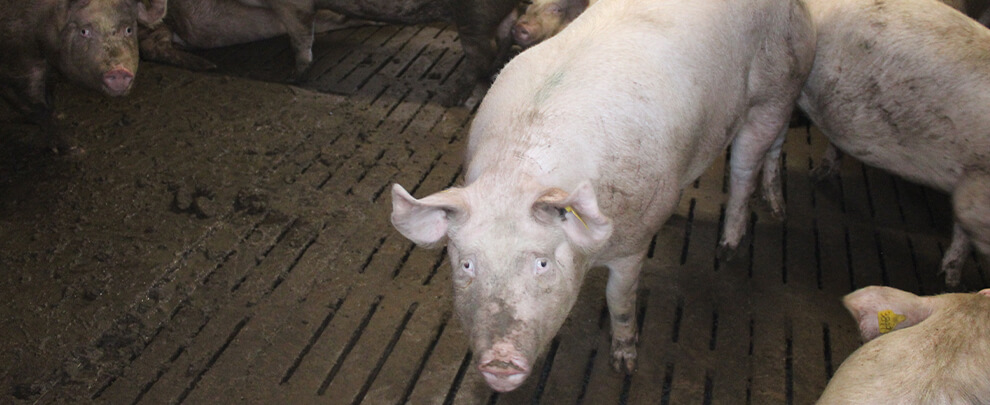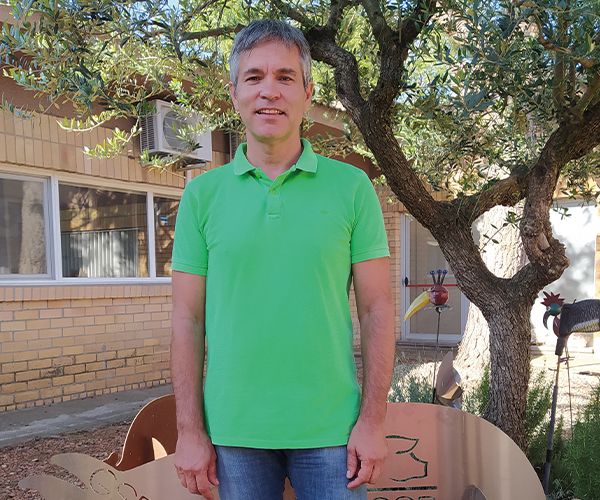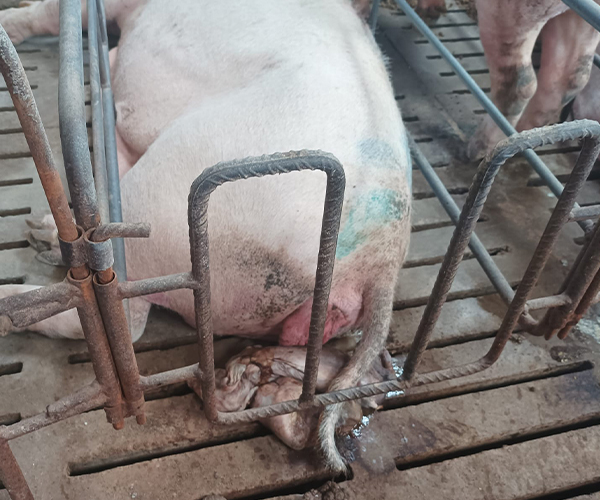Blog
Blog

PRRS Rosalía. Evolution, impact and curent situation
07 of November of 23 - News
In 2020, the first cases of PRRS Rosalía were detected in Catalonia. It is a highly virulent and quickly disseminated strain that, until now, was an unknown strain for the Spanish pork sector. After three years of living with the virus, although it is still present in many Spanish farms, the industry has been learning to deal with it and apply the necessary measures to protect their farms and animals. Jordi Baliellas, veterinarian of the GSP Lleida (Swine Sanitation Group), analyses the evolution of PRRS Rosalía in Spain.

Jordi Baliellas, veterinarian at GSP Lleida. Photo: Jordi Baliellas.
What has been the evolution of PRRS in recent years in Spain?
We are collecting PRRS casuistry data from 2016-2017 based on an agreement we signed between GSP and Interporc. The evolution in these years, if we base ourselves on the incidence of PRRS outbreaks in production farms per year, indicates that in 2016-2019, there was a slow and gradual evolution of cases, but positive globally. The turning point came in 2020 with the classification in Spain of the Rosalía strain and S10 as virulent strains: the improvement we were registering in the last five years was truncated with the appearance of these strains.
How was the Rosalia strain detected, which has affected and is affecting so many farms?
In some sow farms, it was detected in the northeast of Catalonia at the beginning of 2020. When the first sequencing was done, it was determined that the strain was different from all the history we had registered in Spain of PRRS strains, and, when compared with other European databases, it was seen that it was phylogenetically close to Italian strains. In addition, it was a coincidence that the area where the first cases of Rosalia were detected in sow farms was close to fattening farms with piglets imported from Italy. Therefore, at the epidemiological level, it seemed likely that its origin in Spain was due to the entry of piglets with this strain.
What has been its evolution in the last three years?
The effect of the Rosalía strain is that of an oil slick: that is, when it arrives in an area for the first time, the probability of it spreading to other farms is very high, especially in areas of high density. On the other hand, in low-density regions, dissemination is slower or less. For this reason, this strain has been detected in most autonomous communities in Spain. On the other hand, due to the characteristics of the PRRS virus, with a high mutation rate and an ability to recombine with different strains, the trend in these three years has been that new variants have been appearing, as we have experienced closely with COVID-19. However, the PRRS virus is much worse since it is one of the typified viruses with a higher mutation rate worldwide, which generates many strains and variants. Thanks to this and as a general rule, the new strains are weakening and losing virulence so that the new variants that have been emerging in other parts of the Spanish territory, in general, no longer have the virulence that we suffered in Catalonia and Aragon at the beginning of the appearance of the Rosalía strain.
So, what is the current situation?
We now have a relatively stable situation regarding the appearance of new cases on the farm, although some farms are infected with new variants. On the other hand, the most critical condition is in phase 2, in transitions, because the endemic or chronic form of the syndrome is the one that, over time, generates more problems. In addition, if we add that we are in a time of demedicalization, the PRRS prompts bacterial infections.
What symptoms show that there may be PRRS on a farm?
One of the characteristics of these highly virulent strains, such as Rosalia, is that they affect adult animals and piglets almost equally. From here on, one of the most frequent symptoms in infected farms is that the sows stop eating because of the fever, inflammation and discomfort caused by the virus. Given this, if we control the temperature, we will see that the animals have a fever above 41 degrees. After a few days, other symptoms we observe in sows manifest themselves at the reproductive level and cause fetal death and abortions. In addition, as it is a strain that generates inflammation, especially pulmonary, we have more cases of pneumonia and mortality in sows, milk production problems in farrowing wards and higher mortality of lactating piglets in the transition.

PRRS in sows causes fetal death and abortions. Photo: J. Baliellas.
What is the economic and productive impact of the Rosalía strain?
There are effects on productivity. With the Rosalía strain, it takes about six months in sow farms to regain numerical productivity results. By this, I mean that the economic losses are higher if we have more significant productive losses, and the time needed to stabilise the situation is also longer. The cost generated by an outbreak of PRRS Rosalía in a year on a farm can multiply by three and even by four or five the economic effects caused a few years ago by common strains of PRRS.
What prevention measures should be taken to prevent the entry of the virus?
The first and most important measure is external biosecurity. Typically, when we get PRRS on a farm, it is because of a failure related to biosecurity. This would be in terms of how to act at the farm level. However, given that in Spain, we have a management structure of many farms through integration or cooperatives, we can also talk about company biosecurity in everything related to logistics, movement of animals, transport, health status of each farm, unloading of feed, staff visits, maintenance, etc. Finally, we will talk about a country's biosecurity. In this case, if we are talking about high-virulence strains imported from other countries, there should be a collective awareness regarding everything we buy abroad, which is increasing, especially concerning the importation of piglets, as we do not have an unofficial disease control standard, viremic piglets can enter legally to PRRSV. For this reason, we believe there should be greater awareness of the industry and, given the existing risk, the willingness to require our piglet suppliers from other countries that the animals are not viraemic.
How should we act once we have the PRRS inside the farm?
The main problem in PRRS control is that no single, exclusive tool works in all situations. Many actions must be taken to achieve success, such as vaccination to increase immunity, the management system in bands and trying not to enter animals from outside in the replacement to reduce the risks of reinfection and lengthen the presence of the virus on the farm. In addition, we have all the internal biosecurity measures that we can apply in the different phases on the farm to avoid dissemination between batches and animals and, finally, we must take into account that, since it is an immunosuppressive disease, we must improve all aspects related to handling, animal comfort and act on secondary bacterial infections.
What are the industry's future challenges to fight the Rosalía strain?
The first challenge is preventing new strains from appearing or being imported, primarily through good management. It should be noted that, of the three strains labelled of high virulence in Spain, two have probably been imported by the entry of piglets. The second challenge would be to improve biosecurity at a national level because we have seen that when the Rosalía strain has entered high-density areas, it has been challenging to prevent its propagation, which is often linked to biosecurity issues. In the end, if we have good biosecurity on farms, we will have good biocontainment, and when we get a disease, it will ensure it does not spread. Finally, in the scientific field, there have been many publications, and there is much knowledge, but this is not enough, so another of the significant challenges would be to define diagnostic techniques at the field level to be able to determine, for example, if an animal or group of animals is sufficiently protected from an immune point of view so as not to become infected.






